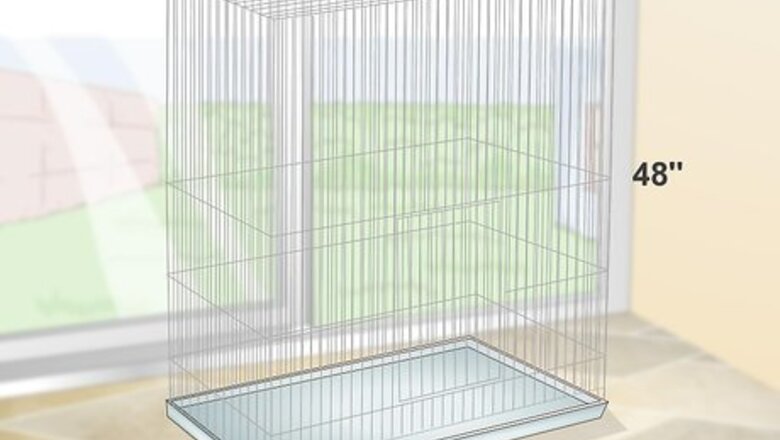
views
Setting up the Cage

Pick a cage with a base that's at least 40 by 30 inches (102 by 76 cm). Big birds need big cages so opt for the biggest cage you can! A big cage will give your cockatoo space to move around, as well as space to play with toys and other enrichment items. Aim for a cage that's at least 48 inches (120 cm) tall, as well. Look for bars spaced 1 to 1.5 inches (2.5 to 3.8 cm) apart.
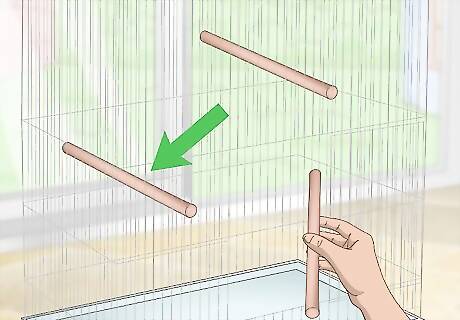
Include lots of perches spaced throughout the cage. Put these at various heights so your bird can hop around. Make sure to include at least 4-5. They can all be the same type of perch, except pick a soft perch for the one nearest the top of the cage. That's where your cockatoo will sleep. For a soft perch, try a cable perch.
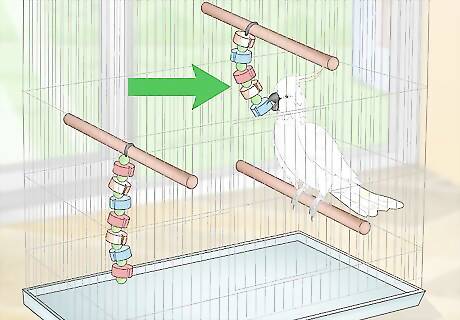
Add plenty of toys to the cage. These birds need a lot of entertainment, and toys will help you keep them entertained! Try wood toys, puzzle toys, and shredding toys, just to name a few. You can find a variety of parrot toys at your pet store or online. You can also add softwood tree branches, cardboard toys, or vegetable-tanned leather toys.
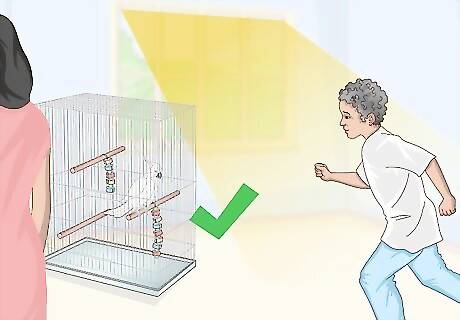
Place the cage in a high-traffic room with plenty of natural light. Your cockatoo will want to get up when the sun is just up, and they love natural light. Arrange the cage so it's not right next to the window, though, as direct sunlight can make the cage too warm. A corner is ideal for birds because it makes your cockatoo feel more secure. In addition, put your cockatoo in an area where they'll see people often. They want to feel like they're part of the flock!
Feeding Your Parrot
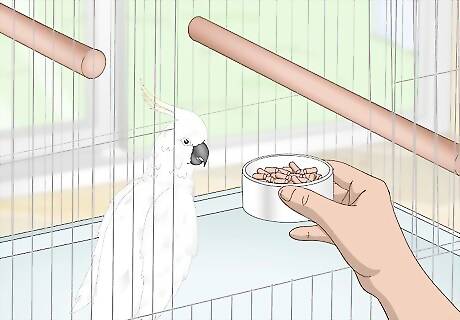
Provide parrot pellets for your bird. Pellets provide a lot of your cockatoo's nutrition, as they are balanced to give your bird what they need. Pellets can account for about 75% of your bird's diet each day. How much you feed your bird is based on how big your bird is. Read the back of the package to estimate how much you should feed your bird and talk to your veterinarian to confirm the amount.
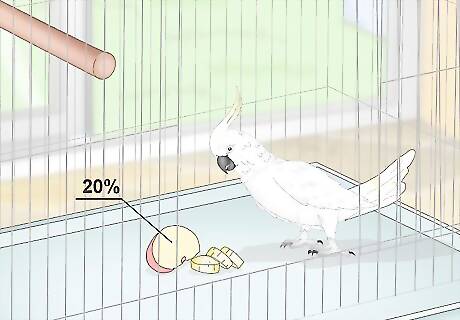
Make 20% of your bird's diet fresh produce, grains, and legumes. Your cockatoo will enjoy a wide range of fresh fruits and vegetables, so try a variety to see what it likes. Plus, a variety will help it get the wide range of nutrients it needs. Any grains you feed your cockatoo should be cooked and cooled. For instance, you can try pineapple, blueberries, melons, and pomegranate, just to name a few. You can also use more common fruits like bananas, apples, and peaches. For vegetables, you can give your bird carrots, summer and winter squash, peas, cabbage, tomatoes, and cucumbers, among others. Your cockatoo can also eat cooked beans, like chickpeas, navy beans, and kidney beans, as well as cooked grains like barley, brown rice, pasta, and oats. Avoid anything with caffeine or chocolate, as well as potato skins, avocados, and peanuts with the shell still on. Limit how many foods you feed that are high in vitamin C, such as citrus, strawberries, kiwi, and broccoli, as too many of these foods combined with a pellet diet can lead to your cockatoo absorbing too much iron.
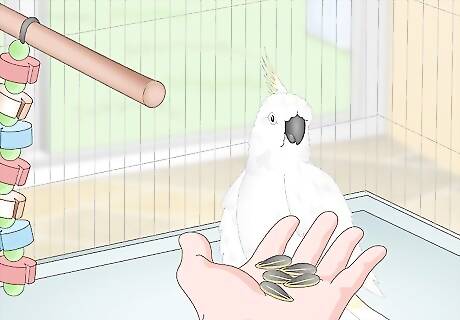
Include a small amount of seeds and other foods as treats. Cockatoos shouldn't be on a seed-only diet, as it doesn't provide enough nutrients. They are too high in fat, and your bird will likely just pick out what it likes, leading to deficiencies. However, you can feed your cockatoo some seed as a treat. It shouldn't make up more than 5% of your bird's diet. You can also feed your bird nuts and table scraps as treats. For table scraps, stick to healthy fruits and veggies, mostly, though you can give your bird bites of other foods in moderation. Keep dairy products to a minimum.
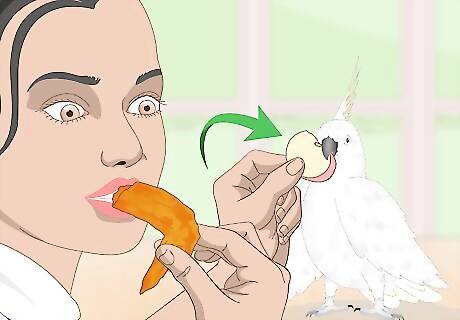
Feed your cockatoo when you're going to be around. Cockatoos like to be around their flock when they're eating, and you're their flock! If your cockatoo is in the same room as your kitchen table, you can even feed it when you're eating.
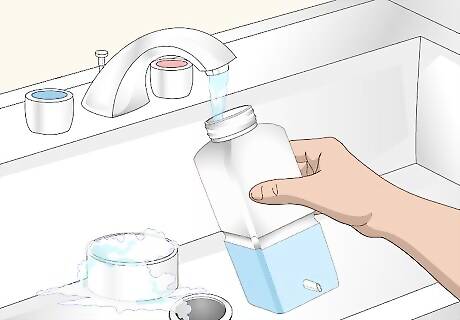
Clean the dishes and change out the water each day. Take the dishes out of the cage and wash them with soap and warm water. Dish soap is fine for this purpose. Rinse them out thoroughly, then refill the water dish with fresh water for your bird.
Grooming Your Bird
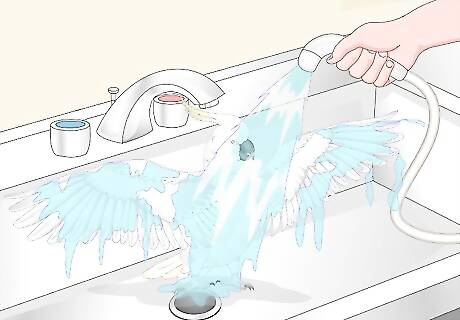
Give your bird a shower or bath at least once a week, if they'll allow it. Many Cockatoos love the water, and they will dive right into a bowl of lukewarm bowl of water if you provide it. The bowl should be very shallow, as they cannot swim and can drown in only inches of water. They'll also love showers, which you can provide with a shower head or a watering can. Just start sprinkling it on your bird, and you will see it light up with excitement. If your bird does not enjoy showers or water in general, do not fret it. Forcing it upon them will cause unhealthy stress reactions. Not showering will create more dander, but will not harm the bird. When showering your bird, make sure the shower stream isn't too strong. It's best to bathe or shower your bird out of its cage, so you don't get water all over the cage.
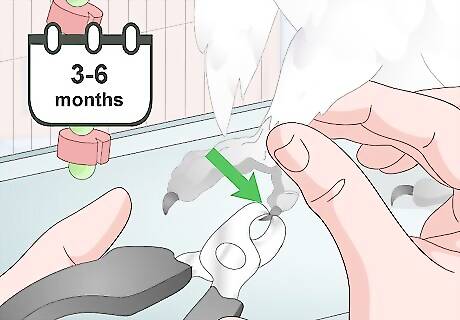
Trim the bird's claws every 3-6 months. To trim your bird's nails, first you'll need to get a powdered clotting agent and guillotine-type trimmer for cats or small dogs. Have a helper hold the bird with a towel over its head, grasping the bird's body gently but firmly in 2 hands. Examine the bird's feet and look for the quick, the small pink vein running through it. Clip off the end of the nail, avoiding the quick. If you hit the quick and your bird starts to bleed, put the clotting powder on it. You can find the powder at most drug stores and pet stores. You can also use corn starch. If you are worried about cutting too deeply you can also use a small Dremel tool such is used for cats and dogs, which uses a rotating disk of sandpaper. Use in short bursts to avoid the nail becoming too hot and burning the bird's toe. Trimming keeps your bird healthy and also keeps you from getting accidentally scratched. Your veterinarian can do this for you if you don't feel comfortable doing it.

Take your bird to the vet for beak trimming once a year. You shouldn't try to trim a bird's beak by yourself. You can cut it into the wrong shape or get severely bitten. Plus, your vet will know if it needs trimming or not, and sometimes, a long beak can indicate a health condition. Find a veterinarian who specializes in birds.
Keeping Your Cockatoo Happy and Healthy
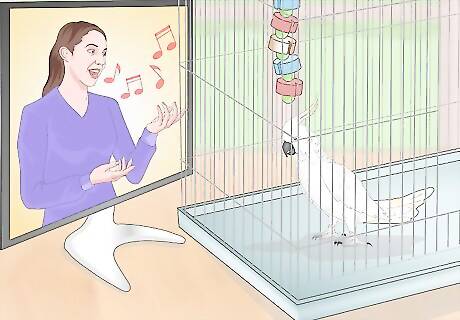
Leave the radio or television on when you are out of the room. Cockatoos like a lot of noise and interaction with their humans. When that's not possible, the sounds from the television or radio provide an acceptable substitute to help entertain your bird.

Be ready for the teenager stage when your bird is 4-5 years old. Much like humans, birds go through a phase in their youth where they get a little cranky and rebellious. During this time, your bird may go from being sweet and affectionate to pushing you away. This phase can be a little annoying, but your bird will eventually get over it. Cockatoos also will misbehave if you don't give them enough attention.
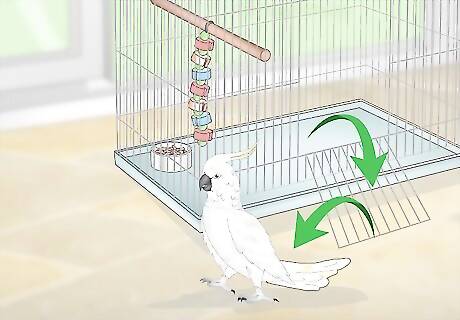
Encourage time out of the cage. Start by enticing your bird out, as not all cockatoos will come out on their own. To entice the bird out, make sure the room is safe by closing doors and windows and looking for hazards. Place a toy or treat just outside the cage or on top of the cage, then open the door and walk away. The bird will likely dart out and grab whatever it is you're offering. Place perches or landing spots around the room, including one near the cage, and over time, your cockatoo will likely explore farther out. When checking for room safety, look for exposed wires, bare bulbs, flames, toxic plants, small hard objects that are easily swallowed, standing water, and hot burners. Hide or cover things you don't want the bird getting into. In addition, make sure to cover holes, such as those behind appliances. Cockatoos love to explore these holes, as they think they are tree cavities. To encourage your bird to interact with you, sit down near the cage sometimes when it is open. Speak in a calm tone to your bird and offer it treats from your hands. Don't make quick or sudden movements. Talk about anything at all, or read to the bird, always using a soothing tone. Allow your bird time out of the cage each day to keep it from getting bored but make sure you are around, as your bird will want to interact with you. These birds can also cause damage to the things in your home very quickly, so you will want to keep your eye on them.
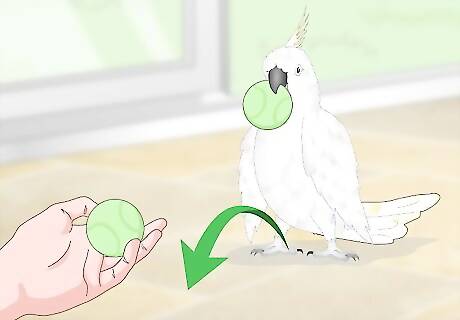
Exercise your bird for at least 30 minutes each day. This should be a period where you're actively engaging your parrot. You can play fetch or just catch with a small, soft ball or toy, such as stuffed animal, for instance, or you can show your bird how to put a small ball into a cockatoo-sized basketball hoop. They love to roll things on the ground. Exercising your parrot helps it get out some of its energy each day. You can even get a bird harness for your cockatoo and take it outside on walks.
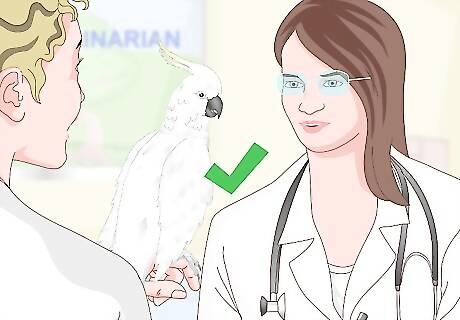
Take your bird to the veterinarian for annual exams. To make sure your bird stays healthy, commit to an annual exam. Your vet can catch any health problem that may be creeping up and provide an appropriate treatment before it gets out of hand. Make sure to take your cockatoo to a vet who specializes in birds.




















Comments
0 comment